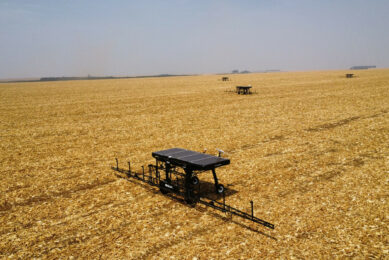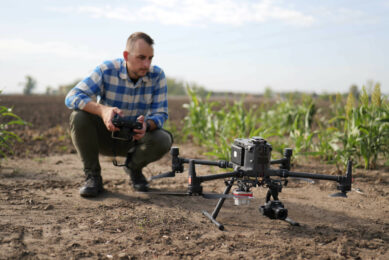Autonomous technology helps drones dodge air traffic

Testing shows drones can use autonomous technology to dodge other air traffic, which means they could safely operate beyond the line of sight.
The Virginia Tech Mid-Atlantic Aviation Partnership (MAAP) and NASA have conducted tests in the context of a year-long project called RAAVIN, investigating potential solutions to detect and avoid: enabling drones to sense nearby aircraft and move out of their way.
Detect unsafe conditions
The leading contenders are optical sensors, acoustic sensors, and radar. But sensing is only a third of the puzzle: the system also has to be able to detect unsafe conditions and direct an appropriate avoidance maneuver.
“We’re just now getting to the point where these three components – the detect, alert, and avoid piece – are mature enough to be able to assemble them and get good results from the test,” said John Coggin, MAAP’s chief engineer, who oversaw the RAAVIN project.
Text continues underneath image
NASA detect-and-avoid software system
To put one promising system through its paces, the research team outfitted a multirotor drone with a state-of-the art Echodyne radar and a NASA detect-and-avoid software system called ICAROUS.
At a rural test facility near Blacksburg, the team executed a series of potential encounter scenarios between the drone and “intruder” aircraft – another drone, operated by NASA, and a Cessna flown by pilots from Liberty University – in which the intruder appeared to be on a path that would take it too close to the drone.
Buffer zone
If the radar and navigation algorithms worked together successfully, the drone would maneuver out of the way to preserve a hockey-puck-shaped buffer zone defining a safe distance between itself and other aircraft.
“That first time that we allowed it to actually run through its autonomous maneuver, I was thrilled,” Coggin recalled. “The NASA ICAROUS software commanded a gentle maneuver to stay clear of the manned aircraft and the drone behaved as it was supposed to.”
Text continues underneath image
Data
When the team processed the data afterward, measuring the closest point of approach between each intruder and the drone and comparing the coordinates the radar reported for the intruders’ location to their own GPS records, it reinforced the test’s success.
“This was one of the most exciting moments I’ve experienced at the test site, to witness an autonomous system replace what the pilot does when it comes to sense and avoid,” Coggin said.
Challenges
The testing also shed light on some of the challenges detect-and-avoid technology encounters when it’s used in a complex real-world environment, and opportunities for further work — for example, improving the ability of the integrated system to identify and reject false targets.
Work will continue with NASA to tackle those challenges, optimising the capability and reliability of the radar and algorithms to move closer to a practical solution for detect and avoid.
Integration of drones into U.S. national airspace
The Virginia Tech Mid-Atlantic Aviation Partnership (MAAP) is one of seven test sites designated by the American Federal Aviation Administration (FAA) to lead the research supporting the integration of drones into the U.S. national airspace.
Federal law requires all aircraft to have a way to see and avoid other air traffic. For drones to share the airspace safely, they need to be able to meet this requirement.
That’s why the FAA’s regulations for commercial drone flights stipulate that the drone must stay within its operator’s visual line of sight.
The line-of-sight requirement can be waived if the operator can make a case that the specific operation they’re proposing can be done safely.
Read the full story on the Virginia Tech website
Join 17,000+ subscribers
Subscribe to our newsletter to stay updated about all the need-to-know content in the agricultural sector, two times a week.



